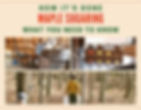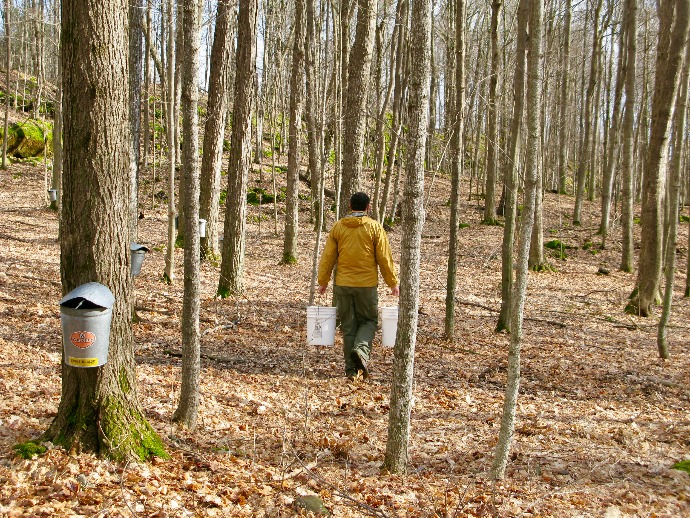All You Ever Wanted to Know about Maple Syrup
- wernertreefarm
- Mar 16, 2021
- 3 min read
Updated: Mar 10, 2023
Love Maple Syrup but wish you knew more about it? Ever wondered how something inside a tree can taste so good? Or even thought syrup comes straight out of the tree? (You're not the first person to think this). Keep reading for all you need to know about maple, from tree to bottle.

How Maple Sap turns into Syrup
Maple trees come in a lot of different varieties. The ones that make maple syrup are called sugar maples; these are the same trees that make Vermont so beautiful with their golden and orange leaves in autumn.
In early spring, when the nights are freezing and daytime temperatures rise to 40°F or warmer, the sap in maple trees starts moving nutrients and sugar from the trees roots to its crown. This sap is a clear liquid with about 2% sugar content- but this can vary a lot! Some trees are naturally sweeter than others. We've seen a range from 1%-6% in individuals.
• It takes about 42 gallons of sap to make 1 gallon of syrup.
• A single tree in a forest will produce about 1 quart of syrup per season.
• Vermont makes about 50% of US maple syrup. In 2020, this was over 2.2 million gallons.

Okay but how's it made?
We drill a hole into a maple tree and insert a spout. The spout either has a bucket underneath it or is attached to plastic tubes that drain into a large storage tank. We collect the sap every day it runs- if you don't, you risk spoiling the sap and having to throw it out. Since sugaring season is only 4-6 weeks long, we can't afford to lose a run.
We collect the sap and bring it to our sugarhouse. Our sap tends to run 1.6%-2% sugar. We run the sap through a reverse osmosis machine, which takes enough water out of the sap to bring it to 4%-5% sugar. This dramatically cuts back on the amount of wood we burn to make syrup.
The concentrated sap flows into our evaporator, a set of stainless steel pans over a large iron firebox, called an arch. Our arch is wood-fired, which means we add logs every 4-5 minutes to keep the fire hot. As the sap boils, it produces large amounts of steam that leave the sugarhouse through the cupola on top of the building. The sap gets thicker as water evaporates.
When the syrup in the pan reaches 219°F we draw the syrup off of the pan. We move the sap to a filtering cone, where it gravity feeds through felt filters to remove minerals and sediment from the syrup.
After filtering, we check density with a hydrometer. Vermont Maple Syrup measures 67% Brix (a density measure) at 68°F. At this point we can grade the maple syrup and put it into bottles.
What Maple Grades Mean
Maple Syrup comes in four grades: Golden Delicate, Amber Rich, Dark Robust, and Very Dark Strong.
We don't understand everything that can change maple color and flavor, but there are a few general rules: lighter colored syrup comes from clear, cold sap early in the season. Sap with a higher sugar content is easier to make into light syrup.
• Golden = Fancy
• Amber = Medium Amber, the lighter part of Dark Amber
• Dark = the darker part of Dark Amber, Grade B
• Very Dark = commercial grade

How to use Maple in Cooking
Maple can replace other sweeteners in most recipes.
• Use ¾ C maple for 1C white sugar. You may need to decrease liquids by a couple tablespoons.
• Use 1C granulate maple sugar for every 1C granulated white sugar. No need to adjust liquids!
Why use maple?
•Maple is an unrefined sugar. It contains more vitamins and minerals than processed sugars.
•Maple is vegan. It's a good choice for a sweetener if you want to avoid animal products.
•Maple tends to be produced by small family farms. Choosing maple means you're choosing to support the livelihoods of families and individuals, instead of large corporations.

Did we miss something? Ask us anything about maple in the comments below.










